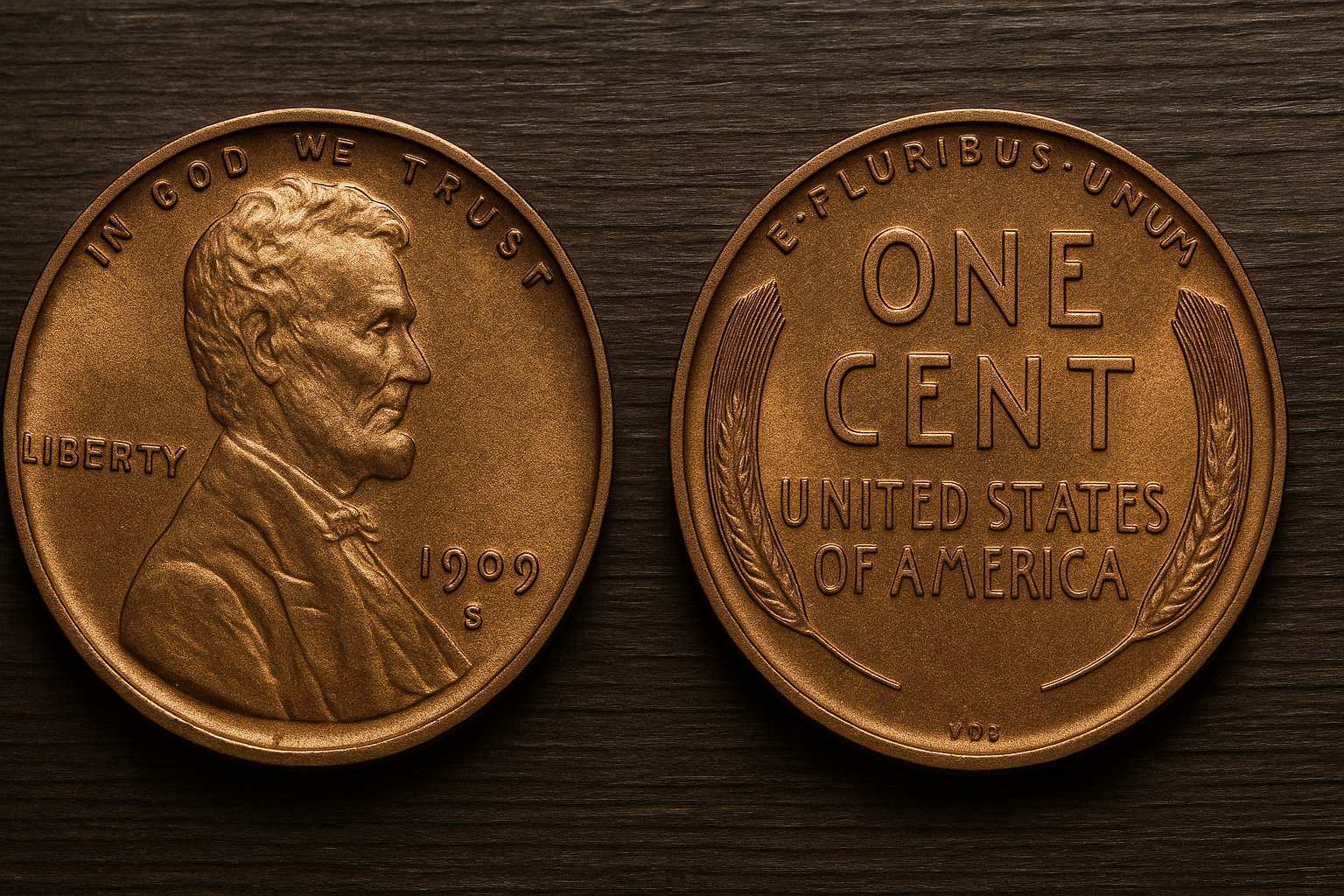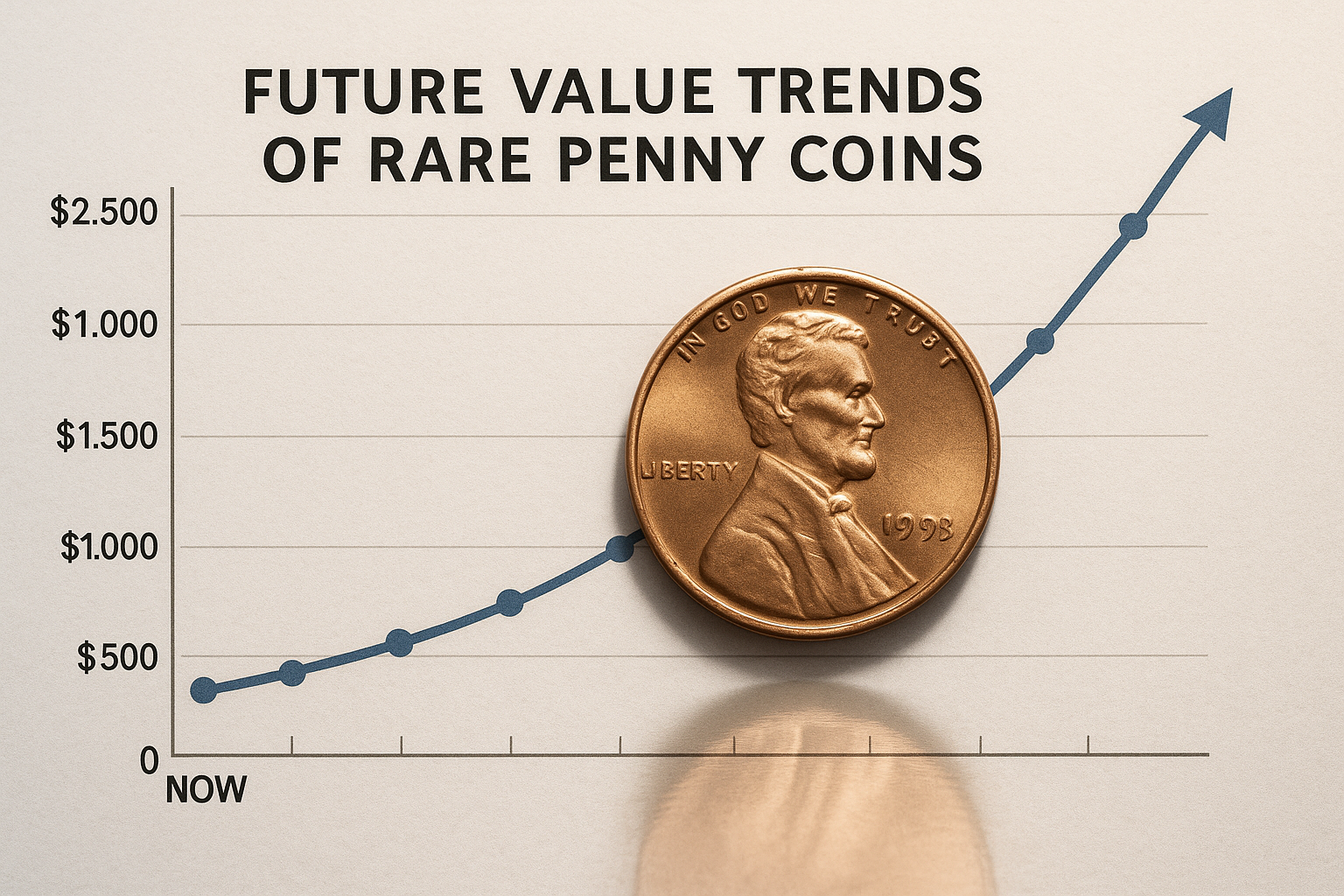Rare Penny Coins: Where to Find Them, Current and Future Value Trends
A penny coin generally refers to the smallest denomination of currency in a country’s monetary system, though its value, design, and composition vary by nation and era. There are many rare pennies to look for, but first of all you need to understand what they are.
In the United States
The penny is the one-cent coin, worth 1/100 of a U.S. dollar.
First minted in 1793, it originally contained pure copper; modern pennies are mostly zinc with a thin copper plating.
The current design features Abraham Lincoln on the obverse (front) and, since 2010, the Union Shield on the reverse.
Common nicknames include “cent” and “Lincoln cent.”

In the United Kingdom (and some Commonwealth countries)
The penny (plural: pennies or pence) has existed for centuries, once made of silver, later copper or bronze.
The modern UK penny is part of the decimal currency system introduced in 1971, worth 1/100 of a pound.
Earlier British pennies could be large copper coins, small bronze coins, or even gold in rare medieval issues.
Penny coins can be collectible due to rarity, mint errors, or historical value. Examples include the 1909-S VDB Lincoln cent (U.S.) and the 1933 British penny—both highly prized by collectors.
The Most Famous and Expensive Pennies
1. United States Rare Pennies
1909-S VDB Lincoln Cent
Why it’s valuable: First year of the Lincoln cent series; “VDB” are the initials of designer Victor David Brenner, removed mid-year due to public criticism.
Mintage: Only 484,000 struck at the San Francisco Mint.
Value range: Around $700 in worn condition to $5,000+ for uncirculated examples.
1943 Copper Penny
Why it’s valuable: Most 1943 cents were made of steel due to wartime copper shortages. A few were accidentally struck on copper planchets.
Mintage: Estimated fewer than 20 known.
Value range: $100,000+ depending on grade.
1955 Doubled Die Obverse
Why it’s valuable: Strong doubling on the date and inscriptions, visible without magnification.
Value range: $1,000 to $15,000+.
2. United Kingdom Rare Pennies
1933 British Penny
Why it’s valuable: Not intended for circulation; only about 7 official examples exist, mostly for ceremonial purposes.
Value range: Over £70,000 at auction.
1954 Penny (Proof)
Why it’s valuable: Never released for public use; only a few proof examples were struck.
Value range: Can exceed £20,000 for pristine specimens.
3. Australian Rare Pennies
1930 Penny
Why it’s valuable: Extremely low mintage during the Great Depression, originally not intended for release.
Mintage: Estimated fewer than 1,500 in existence.
Value range: AUD $20,000–$50,000+.
4. Canadian Rare Pennies
1936 Dot Penny
Why it’s valuable: A small dot under the date distinguishes these from regular 1936 issues; transitional coin before George VI’s portrait.
Mintage: Only 3 known.
Value range: Over CAD $250,000.
Factors That Make Pennies Valuable
Low mintage numbers → fewer coins available.
Mint errors → wrong planchets, double strikes, off-centers.
Historical significance → first or last year of a design.
High grade (condition) → sharp details, no wear.
Unusual composition → like copper pennies struck in steel years.
Where to Buy
You can buy rare penny coins from reputable coin dealers, major coin shows, trusted auction houses, or well-established online marketplaces.
Many collectors start with local coin shops, especially those affiliated with the American Numismatic Association or the Professional Numismatists Guild, since you can see the coins in person and verify authenticity.
Large events like the FUN Show in Florida or the ANA World’s Fair of Money in the U.S., as well as the London Coin Fair in the UK, offer options from vetted sellers.
For high-end pieces, auction houses such as Heritage Auctions, Stack’s Bowers, or Spink are considered safe bets, as every coin is authenticated before sale.
If you prefer online buying, platforms like VCoins host verified dealers, while eBay can be an option if you stick to sellers with strong reputations and clear, detailed photos.
No matter where you shop, choosing coins graded and encapsulated by PCGS or NGC adds more protection, since you can verify their authenticity and grade in official databases.
Predictions

Rare penny coins have proven to be steady performers in the collectibles market, with many key dates and error varieties showing consistent long-term appreciation.
While short-term prices can fluctuate based on economic conditions or collector trends, coins with low mintages, high grades, and strong historical appeal—such as the 1909-S VDB Lincoln cent or the 1943 copper penny—are likely to see gradual value growth over the next decade.
Auction records in recent years suggest that top-tier examples may climb 10–20% in value within five years, especially if they remain in certified, well-preserved condition. As more collectors enter the market and high-grade specimens become scarcer, the premium for authenticity and rarity will only increase.

